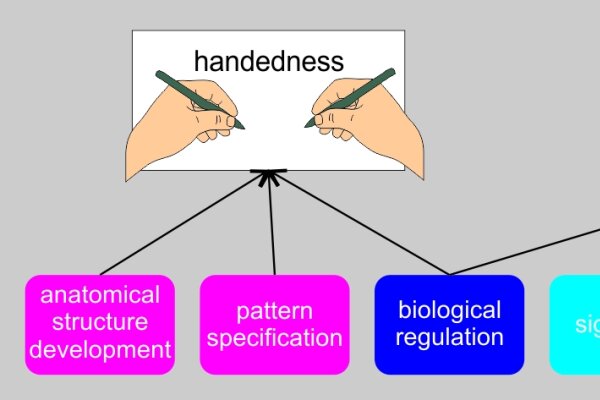2017-07-06

Handedness and language lateralization have often been thought to share a common ontogenetic basis. Although specific genetic influences contributing to each phenotype have been identified, no gene has been found to be involved in both phenotypes. However, it is still possible that genes associated with handedness and genes associated with language lateralization share similar gene functions. Here, a group of researchers from the biopsychology lab conducted gene ontology analyses to identify the amount of overlap in functional gene groups between the phenotypes. Results showed that genes associated with handedness are involved in anatomical structure development, pattern specification (especially asymmetry formation) and biological regulation. Genes associated with language lateralization are involved in responses to different stimuli, nervous system development, transport, signaling, and biological regulation. While “handedness genes” mostly contribute to structural development, genes involved in language lateralization rather contribute to activity dependent cognitive processes. This finding has been confirmed by disease association analysis revealing that genes associated with handedness are involved in with diseases affecting the whole body, while genes associated with language lateralization were specifically involved in mental and neurological diseases. These findings further support the idea that handedness and language lateralization are ontogenetically independent, complex phenotypes.

Handedness and language lateralization have often been thought to share a common ontogenetic basis. Although specific genetic influences contributing to each phenotype have been identified, no gene has been found to be involved in both phenotypes. However, it is still possible that genes associated with handedness and genes associated with language lateralization share similar gene functions. Here, a group of researchers from the biopsychology lab conducted gene ontology analyses to identify the amount of overlap in functional gene groups between the phenotypes. Results showed that genes associated with handedness are involved in anatomical structure development, pattern specification (especially asymmetry formation) and biological regulation. Genes associated with language lateralization are involved in responses to different stimuli, nervous system development, transport, signaling, and biological regulation. While “handedness genes” mostly contribute to structural development, genes involved in language lateralization rather contribute to activity dependent cognitive processes. This finding has been confirmed by disease association analysis revealing that genes associated with handedness are involved in with diseases affecting the whole body, while genes associated with language lateralization were specifically involved in mental and neurological diseases. These findings further support the idea that handedness and language lateralization are ontogenetically independent, complex phenotypes.